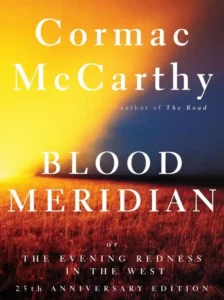Raskolnikov, a destitute and desperate former student, wanders through the slums of St Petersburg and commits a random murder without remorse or regret.
He imagines himself to be a great man, a Napoleon: acting for a higher purpose beyond conventional moral law. But as he embarks on a dangerous game of cat and mouse with a suspicious police investigator,
Raskolnikov is pursued by the growing voice of his conscience and finds the noose of his own guilt tightening around his neck. Only Sonya, a downtrodden sex worker, can offer the chance of redemption.
Who Wrote, Crime and Punishment
Crime and Punishment was written by Fyodor Dostoevsky, a renowned Russian author and philosopher. He is considered one of the greatest writers in world literature, known for his exploration of deep psychological and philosophical themes. Dostoevsky’s works, including Crime and Punishment, often tackle questions of morality, free will, and the nature of good and evil.
What is Crime and the Punishment About
“Crime and Punishment” is a novel by Russian author Fyodor Dostoevsky, first published in 1866. It is considered one of Dostoevsky’s masterpieces and a cornerstone of world literature. The novel delves deeply into philosophical, psychological, and moral questions, exploring themes such as guilt, redemption, and the nature of justice.
What Reading Level do you Need for Crime and Punishment
“Crime and Punishment” is often categorized as suitable for readers at a college or advanced high school level due to its complex language, philosophical depth, and psychological intricacies. Here’s a breakdown of the reading level required:
1. Lexile Level:
The Lexile measure for “Crime and Punishment” is typically around 880L-1080L, which aligns with advanced high school students or college readers. However, the exact level may vary depending on the translation.
2. Challenges in Reading:
- Complex Themes: The novel explores abstract and philosophical topics like morality, guilt, and existentialism, requiring a mature reader to fully appreciate the content.
- Dense Writing Style: Dostoevsky’s writing, even in translation, often involves long sentences, detailed descriptions, and inner monologues that can be challenging for less experienced readers.
- Historical and Cultural Context: The book assumes some familiarity with 19th-century Russian society, including its poverty, class struggles, and legal systems, which might require additional research for full understanding.
- Philosophical Ideas: Raskolnikov’s theories about morality and crime are central to the plot, and grasping these requires critical thinking skills.
3. Recommended Age Group:
- High School (Grades 11-12): For students who are advanced readers and can handle the book’s complexities.
- College Students: Commonly assigned in literature or philosophy courses.
4. Tips for Understanding the Novel:
- Choose a Good Translation: Some translations are more accessible than others. The Pevear and Volokhonsky translation is popular for its readability and faithfulness to the original.
- Supplemental Materials: Reading guides, summaries, or analyses can help clarify themes and cultural references.
- Start with Context: Learning about Dostoevsky and 19th-century Russia can enhance understanding.
While younger or less experienced readers may struggle with the novel, a patient and determined reader, aided by resources, can appreciate its brilliance.
What is Crime and Punishment About
Crime and Punishment is a novel by Russian author Fyodor Dostoevsky, first published in 1866. It is one of his most famous works and a cornerstone of world literature. The novel explores deep philosophical and psychological themes, focusing on morality, guilt, and redemption.
Plot Overview
The story follows Rodion Raskolnikov, a young, impoverished ex-student living in St. Petersburg. Raskolnikov is intelligent but consumed by despair and alienation. He devises a theory that extraordinary individuals have the right to commit crimes if it serves a higher purpose. To test this theory, he murders a pawnbroker, Alyona Ivanovna, rationalizing that her death would free him to do greater good. During the act, he also kills her innocent sister, Lizaveta, who walks in on the crime.
Key Themes and Ideas
- Guilt and Redemption: Raskolnikov’s psychological turmoil after the murders is central to the novel. He struggles with overwhelming guilt and paranoia, which drives him to erratic behavior.
- Moral Philosophy: The novel questions whether ends justify means and explores the ethical boundaries of human action.
- Social Inequality: Dostoevsky critiques the harsh socio-economic conditions of 19th-century Russia, which contribute to Raskolnikov’s desperation.
- Religion and Spirituality: The story reflects on the possibility of redemption through suffering, love, and faith.
Other Key Characters
- Sofya (Sonya) Marmeladov: A self-sacrificing young woman who turns to prostitution to support her family. She becomes a symbol of compassion and faith, ultimately guiding Raskolnikov toward redemption.
- Porfiry Petrovich: The intelligent and psychologically astute detective investigating the murders. He suspects Raskolnikov early on and plays a cat-and-mouse game to provoke a confession.
- Dunya Raskolnikova: Raskolnikov’s devoted sister, who represents moral strength and resilience.
Conclusion
The novel culminates in Raskolnikov’s confession and subsequent imprisonment in Siberia. It ends with a glimmer of hope as he begins a journey toward spiritual awakening and redemption, guided by Sonya’s unwavering love.
Crime and Punishment is a profound exploration of the human condition, delving into the darkest corners of the mind and the possibility of redemption through love and suffering.
How many Pages is Crime and Punishment
The number of pages in Crime and Punishment can vary depending on the edition, publisher, and translation. On average, the novel typically spans around 430 to 500 pages. For example:
- In many standard editions, it’s about 430–480 pages.
- Some versions, particularly those with extensive footnotes or commentary, can be longer.
If you’re looking for a specific edition, it’s best to check the details from that particular publisher.











